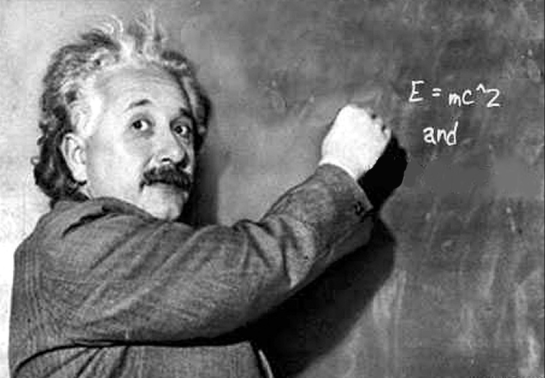Finding For ƒ
Finding For ƒ
“Equations are more important to me, because politics is for the present, but an equation is something for eternity.”
~ Albert Einstein
I have written on previous occasions about the nature of organisational effectiveness, even going so far as to provide the equation
E=ƒ(m)
to state that the effectiveness of an organisation (E) is a function (ƒ) of the prevailing collective mindset (m) in that organisation.
But what is that function ƒ(), exactly?
Here’s another equation we may be familiar with:
E=mc²
This tell us that even a small mass (m) can produce huge quantities of energy (E) because the speed of light (c) is so huge.
Einstein
Einstein was a cool dude who knew a bunch of stuff about a whole passle of stuff, not just Special and General Relativity.
I’ve found much inspiration in his words over the years. The simplicity intrinsic to the Antimatter Principle being just one example.
“Everything should be made as simple as possible, but not simpler.”
~ Albert Einstein
And my position on the fallacy of software methods derives from:
“We can’t solve problems by using the same kind of thinking we used when we created them.”
~ Albert Einstein
E=mc² Revisited
Back to the original question. What is the nature of ƒ in E=ƒ(m) ?
Here’s one idea:
E=mc²
Effectiveness (of any knowledge-work organisation) is equal to the motivation of the folks involved (m) multiplied by the innate potential capability of people in general (c), squared.
I’m not saying this equation portrays reality, but rather that it helps illuminate a certain way of thinking, and of being.
“Reality is merely an illusion, albeit a very persistent one.”
~ Albert Einstein
– Bob


I would propose a slightly different equation.
Something like:
E(oa) = [ f(cp) * f(ap) ] / f(de)
Where:
oa = objective achievement
cp = clarity of purpose
ap = alignment to the purpose
me = misalignment of egos
For me effectiveness has to be in the context of an overall objective – and the definition and clarity of higher-order purpose is an important determinant as to whether the project/scheme/business will be successful or not – and whether sufficient resources/people/money/time are aligned to that purpose.
The bigger the egos – or misalignment of personal agendas to the problem, the more ineffective the project/scheme/business becomes.
Just a thought. I like the way you are putting it into mathematical formula, though. It appeals to my engineering mind!
Nice, imagination-evoking, post Bob. I think the “f” and all of its variables are non-linear and time-varying. It’s a continuously morphing equation that’s always ahead of its wannabe solvers. I also think that money is one of the bazillion time varying variables ensconced within the ever-changing equation. After all, how can one be highly Effective (E >> 1) without making and fairly distributing money to one’s stakeholders? In those organizations formed to make money through software as one of its highest priority goals, when money = 0, E = Effectiveness = 0. Or maybe not? Thanks for listening.
I’d say E is m times c cubed. motivation * clarity * capability * collaboration ability.
Can’t wait for your Organisational Theory of General Relativity!